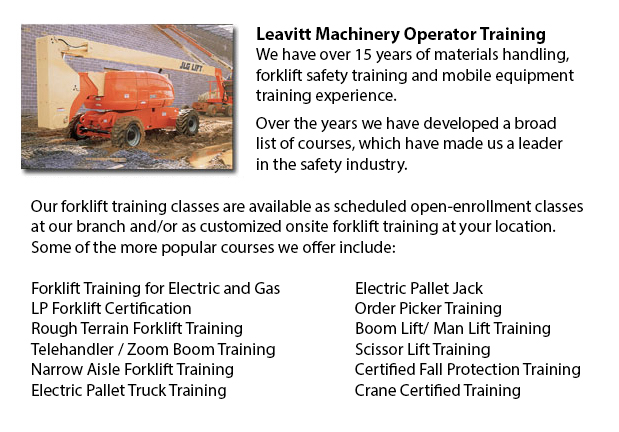
Hamilton Aerial Platform Training - Aerial hoists are able to accommodate various odd jobs involving high and hard reaching spaces. Often utilized to perform routine repair in structures with high ceilings, prune tree branches, hoist heavy shelving units or repair telephone lines. A ladder might also be used for some of the aforementioned projects, although aerial hoists provide more safety and strength when correctly used.
There are many models of aerial platform lifts accessible on the market depending on what the task needed involves. Painters often use scissor aerial lifts for example, which are classified as mobile scaffolding, useful in painting trim and reaching the 2nd story and above on buildings. The scissor aerial jacks use criss-cross braces to stretch out and lengthen upwards. There is a platform attached to the top of the braces that rises simultaneously as the criss-cross braces elevate.
Cherry pickers and bucket lift trucks are another variety of the aerial hoist. Typically, they possess a bucket at the end of an elongated arm and as the arm unfolds, the attached bucket platform rises. Forklifts use a pronged arm that rises upwards as the handle is moved. Boom lift trucks have a hydraulic arm which extends outward and elevates the platform. All of these aerial platform lifts require special training to operate.
Training courses offered through Occupational Safety & Health Association, acknowledged also as OSHA, deal with safety procedures, system operation, repair and inspection and device cargo capacities. Successful completion of these education programs earns a special certified license. Only properly licensed individuals who have OSHA operating licenses should operate aerial lift trucks. The Occupational Safety & Health Organization has established rules to maintain safety and prevent injury while using aerial lift trucks. Common sense rules such as not utilizing this machine to give rides and ensuring all tires on aerial lift trucks are braced in order to prevent machine tipping are referred to within the rules.
Sadly, data illustrate that over 20 operators pass away each year while running aerial platform lifts and 8% of those are commercial painters. The majority of these incidents are due to inadequate tire bracing and the lift falling over; for that reason a lot of of these deaths had been preventable. Operators should make sure that all wheels are locked and braces as a critical security precaution to stop the machine from toppling over.
Marking the surrounding area with observable markers need to be utilized to safeguard would-be passers-by so that they do not come near the lift. Moreover, markings should be set at about 10 feet of clearance amid any electric lines and the aerial lift. Lift operators must at all times be appropriately harnessed to the hoist while up in the air.
-
Hamilton Heavy Equipment Operator Certification
Hamilton Heavy Equipment Operator Certification - The heavy equipment operator is a person who manipulates the controls and drives different kinds of big machinery. Heavy machinery is most commonly utilized on construction sites to deliver supplies t... More -
Hamilton Scissor Lift Ticket
Hamilton Scissor Lift Ticket - Scissor lifts have greatly benefited construction operations in view of the fact that the job that used to require much effort and lots of people, can now be completed utilizing the scissor lift truck and only one indiv... More -
Hamilton Forklift Certification Courses
Hamilton Forklift Certification Courses - Forklift certification courses really help to make sure that businesses utilizing forklifts, comply with the regional and local rules. The drivers of the forklift should undergo forklift certification prior t... More -
Hamilton Forklift Training Program
Hamilton Forklift Training Program - The forklift is a common powered industrial vehicle which is in wide use these days. They are occasionally called jitneys, hi los or lift trucks. A departments store would use the forklift to unload and load merch... More -
Hamilton Forklift License
Hamilton Forklift License - Obtaining a forklift license or forklift certification in North America would require the trainee to do hands-on training in addition to classroom instruction. The state, provincial and federal regulatory bodies are respon... More -
Hamilton Manlift Operator Certification
Hamilton Manlift Operator Certification - Our aerial lift and scissor platform training and certification empowers participants with a general understanding and knowledge of the efficient and safe use of "Power Operated Mobile Work Platforms," under... More -
Hamilton Forklift Operator Certification
Hamilton Forklift Operator Certification - Forklift operator certification is usually needed for employees working in industrial, warehouse or construction setting to guarantee the safe utilization of forklifts. Workplace training has to follow a met... More -
Hamilton Scissor Lift Operator Certification
Hamilton Scissor Lift Operator Certification - Rules within North America normally suggest that operators of booms, scissor lifts or aerial work platforms all acquire operator certification. Scissor lift operator certification is not mandatory, but t... More

Forklift Certification Hamilton
TOLL FREE: 1-888-254-6157
Hamilton, Ontario
forkliftcertificationhamilton.com
Email Us
About Us


